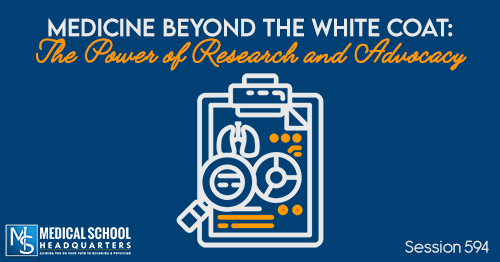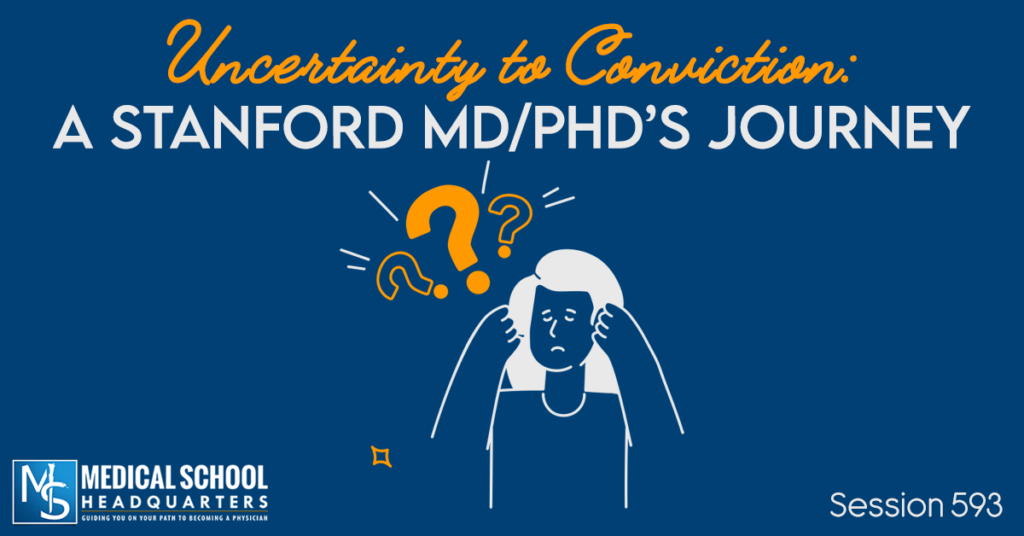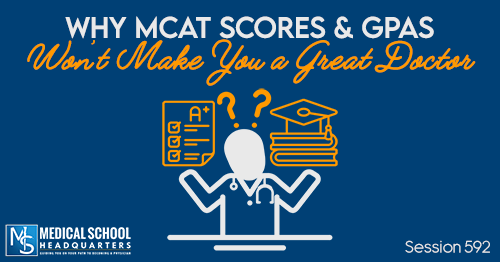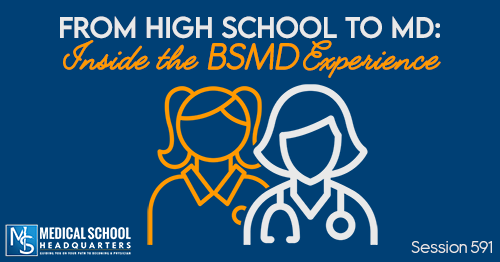There’s a cost to most things, and the medical school application process is no exception. Unfortunately, that cost can become quite high, especially for students who don’t have assistance from their parents or are working parents themselves. This can make it even more difficult for low-income or nontraditional students to enter the field of medicine and remedying this is part of our goal in offering free resources.
We hope that offering free advice can reduce some of the costs and point you toward programs that help students cover application costs. We also plan to continue advocating for changes in the system to allow a greater diversity of students to achieve their dream of becoming physicians.
Breakdown of Costs
Knowing what aspects of the application require payment and how much that might come to will allow you to plan for them and begin looking into ways to reduce the cost or save up for it.
MCAT
Before you can apply, you have to pay to prep for and take the MCAT. We covered this more in-depth in our Guide to Prepping for the MCAT on a Budget (link). You should be prepared to pay for the registration cost ($325 at the time of writing), the AAMC prep materials ($320 if you buy each item individually or $268 as a bundle), and one set of review books. Both the cost of the MCAT and the cost of the application itself can be reduced through the AAMC’s fee assistance program, which is covered in the MCAT guide and later in this article.
The Primary Application
The cost of the primary application is necessary. It is either largely waived or reduced by the AAMC’s and AACOM’s respective fee assistance programs.
AMCAS and AACOMAS charge a base fee and a fee per school after the first. AMCAS charges $170 for the first school and $42 for each school after that. For DO applicants, it costs $196 to apply to your first school and $46 for each subsequent school. TMDSAS charges one flat fee of $200 that covers all schools you apply to, whether that be one or all of them. Their respective websites will have the most up-to-date cost breakdown.
Secondary Application Costs
Schools also charge fees to submit your secondary application, and the actual varies between schools. The fee amount typically ranges from $50 – $200, and the average is $75. You can find prompts and fees at secondaryapps.com. Their website or MSAR (for MD schools) is the best place to find this information for each school. While looking that up, you can also check whether they waive secondary fees for AAMC FAP recipients. Many schools do, but it’s always good to double-check so you can factor any that don’t fit into your budget.
Interview Costs
One benefit of how the COVID pandemic has impacted the past two application cycles is that interviews have been conducted virtually. This has dramatically reduced students’ costs by removing travel costs (airfare and lodging) and reducing the potentially lost wages from missing work. As of this writing (winter of 2022), it’s uncertain whether interviews will be held in-person or virtually in the upcoming cycle, which may depend on the school. Regardless of schools’ decisions, it will be helpful to understand what a typical interview season costs because it’s likely that they will eventually return to being all in-person, whether this year or in subsequent application cycles.
This is one stage where the cost isn’t for each school you apply to, but it can still be the most expensive part of the process, even if you only have a handful of interviews. You’ll need to have a suit, whether that means buying or borrowing one. If your interview is out of town, you’ll also have to pay for travel costs, either on the road or in the air, and transportation while in town for the interview. This also comes with potentially lost wages for missing work for each interview.
Medical School Deposit
After you’re accepted to medical school, you’ll have to pay a deposit to hold your seat in the class. Paying this deposit doesn’t mean you’re required to go to this school even if you’re accepted to another school. Each school sets its deposit amount, but the AAMC caps how much its schools can charge. Deposits to schools under the AAMC are also sometimes refundable. AACOM doesn’t limit deposits, and they are not refundable. DO deposits can be up to $2500.
How to Reduce Costs and Get the Most Out of Your Budget
First, go to appexpenses.com and add how many schools you plan to apply to and where you’d be flying from for any out-of-town interviews. This will give you a cost estimate for every step of the application process and give you a total at the bottom of the calculator. This will let you know what the average-to-high cost will be, and next, we’ll go over ways to hopefully reduce it.
AAMC/AACOM Fee Assistance Programs
These two programs are designed to benefit students who wouldn’t be able to apply to medical school without this assistance. Their qualification requirements and the benefits that come with them are different. Still, they can both be very beneficial in allowing more students to afford to apply to medical school.
The AAMC recently changed its criteria to include more students. Students no longer need to be US citizens or visa-holders to qualify; applicants need only have a US address. Students who are 26 or old when they submit their FAP application no longer need to include their parent’s financial information. The AAMC’s fee assistance recipients receive reduced MCAT registration costs, free access to AAMC official prep materials, and access to the Medical School Admissions Requirements database, which is very useful for researching schools. Recipients also have their primary application costs waived for up to 20 schools. Many schools will also automatically waive the secondary application fee for recipients. Read the details and updated policies here.
The requirements and benefits are different with AACOM, but both programs are beneficial to low-income students. The AACOM fee assistance waives the initial $196 for the first school, but applicants are still responsible for the $46 per additional school. Another thing to note about the AACOM waiver is that you must submit your primary application within 14 days of qualifying, so only apply for it when you know you are nearly ready to submit your primary application. Read further details about the program and find the most up-to-date pricing here.
TMDSAS doesn’t offer a waiver, but luckily their application is affordable, with one flat fee for any amount of schools you apply to.
School List
First, understand that there are no tiers of medical schools and that any ranking doesn’t necessarily indicate their quality compared to any other medical school. Medical education in the US is highly regulated. Any accredited medical school (MD or DO) will provide you with a quality education that will allow you to practice in any US state in the future. Don’t fall into the trap of building your school list around tiers or feel like you have to apply to some school because you’d be cheating yourself out of an opportunity if you didn’t.
The average number of schools students apply to goes up every year. One way to save money is to be selective with your school list. You have to consider whether limiting your school list is worth it, considering the risk of reapplying and the costs associated with that. You can still shorten your list and be strategic about building it while still applying to enough schools to feel comfortable about your chances.
Build your school list based on what you are looking for and whether you fit their mission before looking at stats. Your stats only need to be good enough to get them to look at you, and your fit with the school will take you the rest of the way. If you need to cut schools from your list to reduce costs, it is reasonable to cut schools where your stats may not be competitive enough. I’ll still caution you to look beyond the median that MSAR gives you. It’s more helpful to look at the 10th percentile information it gives you if you look at the school’s full page. Being at or below this number doesn’t mean you have zero chance, but it can indicate that you might not be the most competitive applicant for that particular school.
Learn more about building a school list in Session 437: How to Build the Ultimate Med School List and the School List section of The Premed Playbook Guide to the Medical School Application Process.
Delaying Your Application
When you’re passionate about something, there can be an internal urge to rush, and you may feel external pressures as well. You might want to spend as much of your life working as a physician as possible, or you might be facing questions from family and friends about when your schooling and career will start. If you want to, and it’s possible in your circumstances, it’s an entirely reasonable option to take time to work to save up for the application. Find at least some way to stay connected to medicine through volunteering, shadowing or a paid clinical role. Medical school applications will still be here when you’re ready. If you choose this route, wait to take your MCAT until you’re getting ready to apply so that you don’t have to retake it. Many schools will only accept an MCAT score from within the past three years.
Scholarships and Other Funding Assistance
It’s worth looking online for any scholarships open to pre-professional students, Research any you find to make sure you qualify and to find any drawbacks. There are also credit cards that offer 0% interest for 18 months. If you choose to open one of these, take care to plan how you’ll pay it off within that time frame, because if you don’t you’ll be responsible for the balance, plus the interest.
If you’re reading this ahead of applying, use appexpenses.com to get an estimate of what your overall costs might be and use this as a guideline to begin saving now.






